CYCLONES are a part of life in Far North Queensland.
Each year from November until April, we wait to see what the Coral Sea will throw at us.
From Australia’s deadliest cyclone, Mahina, in 1899 to the $800m damage bill caused by Yasi in 2011, cyclones test our spirit but also highlight our resilience.
This special three-part series explores how cyclones affect the lives of Far North Queensland residents.
Part 1 features a look back through the past 120 years at some of most life-changing cyclones to have struck the region and how towns have rebuilt.
GORDON Goes feared the worst as Larry approached.
He and his wife Joanne had just bought their Innisfail home, and with the category 4 storm bearing down on them, they were questioning the move.
The former Westpac agribusiness manager’s thoughts were also with his clients, who would lose so much in the cyclone.
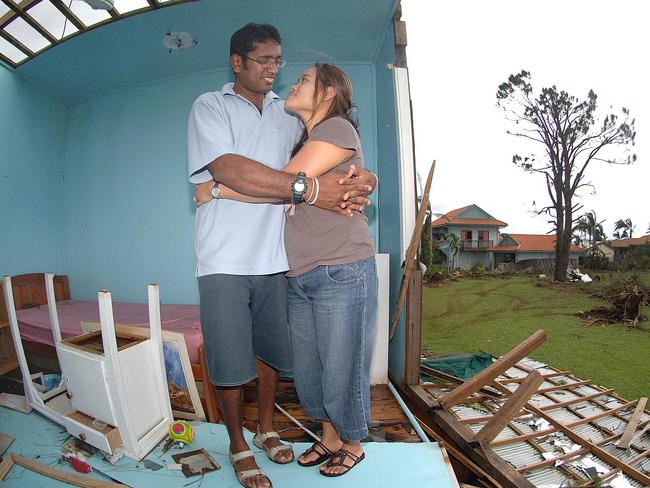
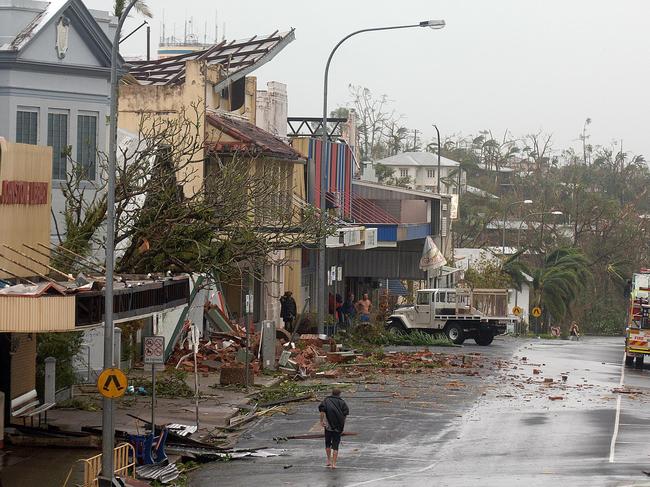
“All my customers were devastated,” Mr Goes said.
“The effect of that was two years of hard work to get them through.”
The Goes suffered some damage – a shed and all its contents was blown away, and there was damage to a patio.
But, by comparison, they felt they’d “won the lotto”.
“We’re halfway up the hill, and you could see houses were just flattened and gone,” he said.
“My wife and I were looking at our house thinking, ‘it’s a solid house’.”

Like so many in the Far North, the Goes would go through a similar experience just five years later when Yasi crossed in 2011.
But yet again, they escaped relatively unscathed, and joined in with others as community spirit took over and neighbours helped neighbours to remove fallen trees and debris.

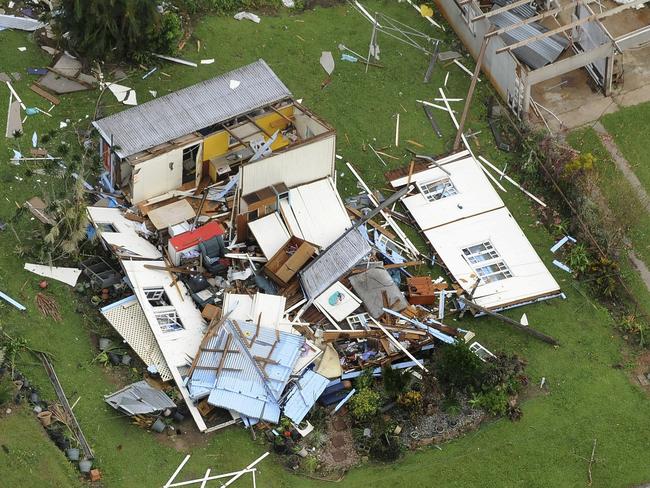
“The whole neighbourhood got involved,” he said.
“The butchers had a big barbecue because otherwise the food would have gone bad and the council had water out for everyone who didn’t have water – there was a lot of community spirit.”
Australia’s deadliest cyclone remains Cyclone Mahina, which killed about 410 people when it wiped out a fleet of pearling schooners at Cape Melville in 1899.
Port Douglas had to be essentially rebuilt after a cyclone struck in 1911, killing two people and leaving just seven of 57 houses standing.
Two decades before Larry unleashed its wrath on Innisfail, three people died when Cyclone Winifred crossed the coast south of the town in 1986.
Then there was Cyclone Justin, which killed seven in the Far North and 26 in Papua New Guinea in 1997.

Senior meteorologist Greg Connor said tropical lows and cyclones were part of the Far North’s weather system and they brought essential rain to coastal and inland parts of North Queensland.
“Even though tropical cyclones are capable of great destruction, they are part of life in North Queensland,” he said.
Despite the risk, Mr Goes said he wouldn’t want to be anywhere else.
“We enjoy Innisfail even though it rains a hell of a lot,” Mr Goes said.
“Cyclones are just a fact of life – you go through them and you get on with it.
“I prefer living in Far North Queensland.”

THE utter destruction of a city on the other side of the world gave those calling the shots in Cyclone Larry the knowledge they needed to weather the storm.

Less than a month before the Category 4 system smashed into Innisfail, former Johnstone Shire Council mayor Neil Clarke, the local SES and other emergency workers were taught what went wrong when Hurricane Katrina hit New Orleans.
“We became aware the biggest threat to life was the storm surge rather than the wind – 80 per cent of people killed in Katrina died through drowning, rather than structural damage” Mr Clarke said.
“When Larry was bearing down we made sure all the beachside suburbs and the low lying areas of Innisfail were evacuated if possible so they wouldn’t be drowned in the storm surge.
“We were expecting between a three and five metre surge that would have inundated any low lying beach front property.”
Fortunately for the town, Larry coincided with a low tide, and the surge was a metre lower than originally tipped.
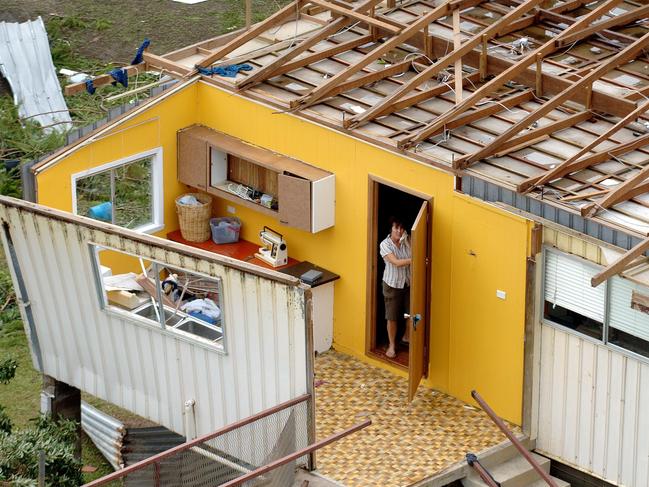
But the cyclone was still one of the wildest to ever cross the Queensland coast, with 240km/h winds recorded, and forced many to temporarily leave their homes.
Mr Clarke said the hardest part of Larry for him was leaving his wife and two children at home while he went to assist the community at an evacuation centre.
“I was feeling guilty about being away from my family while I was serving the role as mayor of Johnstone Shire,” he said.
“If anything had happened to them I would’ve felt terrible.
“Luckily enough my home only suffered minor damage, fence palings were blown over and my garden shed was blown away.”

Excerpts from a letter written by Diane O’Brien, of Innisfail, one week after Cyclone Winifred:
By 12 noon it was east of Cairns and expected to cross the coast at Babinda — by then the wind was building up and the rain just kept pouring down.
We ate the lunch I had prepared immediately and just as well as we lost electric power at 1.13pm.
From that time the weather deteriorated; that is, the wind blew in increasing intensity until 6.30pm. It is hard to realise looking back that it was over five hours — we all agreed the time went quickly. There were moments when we wondered how long it would go on — for the most part I suspect we did not think of it stopping, just wondered how long the house would hold out.

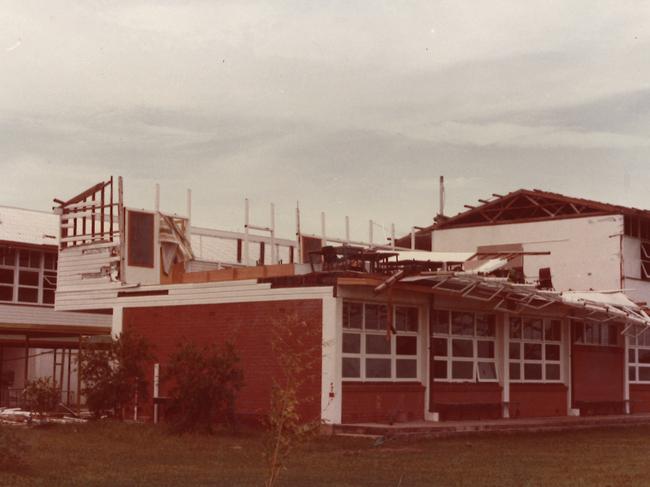
Trees and buildings began falling and disintegrating soon after 1.30pm. One of the first trees we saw go was the giant poinciana at the top of Ryan St (outside the bank house) — it was completely uprooted and fell with little bad effects straight down the hill.
Our own trees began breaking up, being lopped indiscriminately by the fury of the wind. The coconuts and palms give with the wind, they would be stretched out to extraordinary lengths and then whip back suddenly to an upright position.
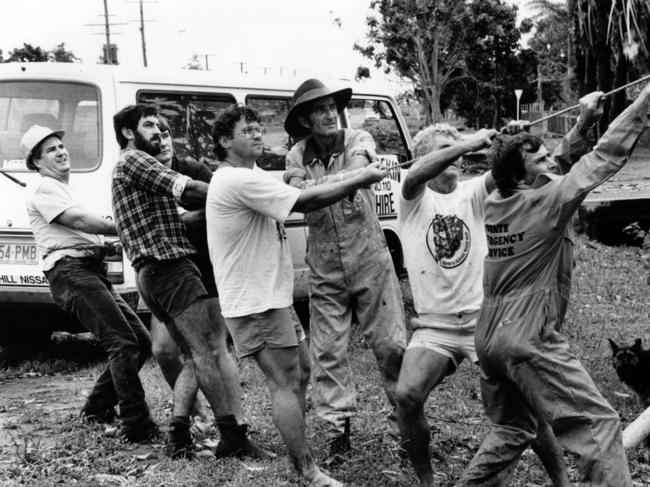
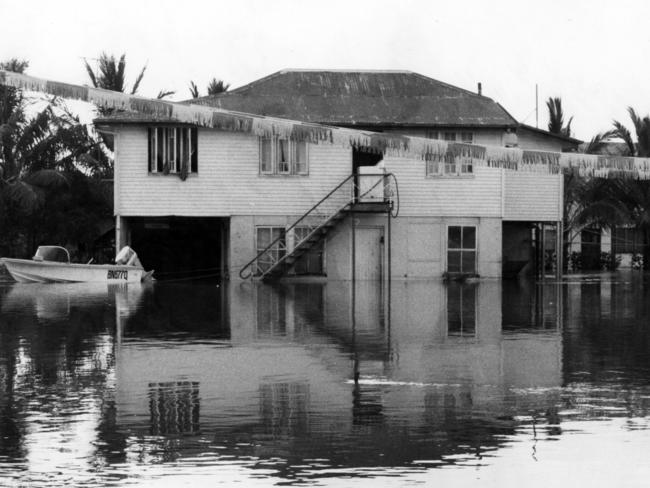
What was extraordinary (the English language doesn’t have enough words, or I don’t know them) was the sound of the wind. Howling, roaring, wailing, screaming — it did all of these. At one time we heard what sounded for all the world like a convoy of semi-trailers coming up the hill. We all looked at each other thinking: “What is anybody doing driving in this?”. We then realised it was just a new gust of wind, more furious than the last.
It seems no one in Innisfail really slept that night — I was certainly conscious of every hour and was wide awake to see the most spectacular dawn and sunrise imaginable ...
In a totally becalmed air I found a ravaged town. In every direction I could see further than I had ever seen before — but I could see a bareness and a stripped landscape I never could have imagined.
Tomorrow part two examines what’s in store for us in the future and how we’re preparing. Cairns has been lucky to avoid direct hits, but how long can that luck last?

Add your comment to this story
To join the conversation, please log in. Don't have an account? Register
Join the conversation, you are commenting as Logout
Who Owns Tassie’s farms: Biggest investors, landholders named
An annual investigation can reveal Tasmania has been a key destination for capital in the race to invest in Aussie agriculture. See the full list.
Families, billionaires and foreign owners of SA’s largest farms revealed
From sprawling stations in the north to prime cropping in the south – meet those who own South Australia’s largest farming properties. See the full list.